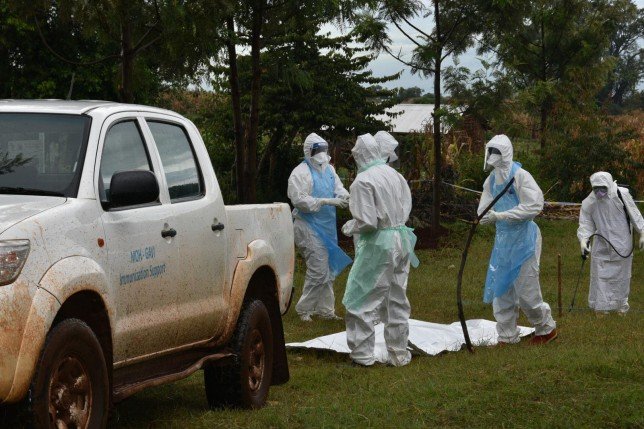Further deaths and instances of the deadly Marburg disease are being reported in two African nations.
The World Health Organization (WHO) revealed on Thursday that eight brand-new confirmed illnesses had been discovered in Equatorial Guinea.
Since the outbreak began last month, there have been a total of 20 documented deaths, nine laboratory-confirmed cases, and 20 suspected cases.
The virus, which is a viral hemorrhagic fever like Ebola, can cause fever, vomiting that is tinged with blood, diarrhea, and exhaustion in its victims.
There are no vaccines or antiviral treatments and it can have a fatality rate of up to 88%, according to the WHO. The average case fatality rate is around 50%.
Experts have warned efforts to stop the spread must be intensified as the new cases in Equatorial Guinea are around 93 miles apart.
Of the eight infections, two were in the province of Kié-Ntem, four from the Litoral and two from Centre- Sur provinces.

‘The confirmation of these new cases is a critical signal to scale up response efforts to quickly stop the chain of transmission’, WHO Africa Director Matshidiso Moeti said in a statement.
Yesterday, Tanzania announced its first ever outbreak of the disease with five deaths reported in Kagera.
Emergency teams have been sent to the area in the country’s north-west region as three further cases were reported at a hospital.
Tanzania’s Health Minister Ummy Mwalimu said the disease had been contained and she was confident it would not spread further.
Last month, Cameroon health officials said two teenagers were suffering from suspected cases.
But the nation’s health ministry dismissed the reports, with movement currently restricted along the border to avoid contagion.

Marburg virus disease was initially detected in 1967 after simultaneous outbreaks in Marburg and Frankfurt in Germany and in Belgrade, Serbia.
The Egyptian rousette fruit bat often carries the virus, but African green monkeys and pigs can also harbour it.
It spreads through human-to-human transmission via direct contact with the blood, secretions, organs or other bodily fluids of infected people, and with surfaces and materials contaminated with these fluids, the WHO says/
Both Marburg and Ebola – which sparked an epidemic centered in Western Africa from 2013 to 2016 – are members of the Filoviridae family (filovirus).
They are caused by different viruses, but the two diseases are clinically similar.

